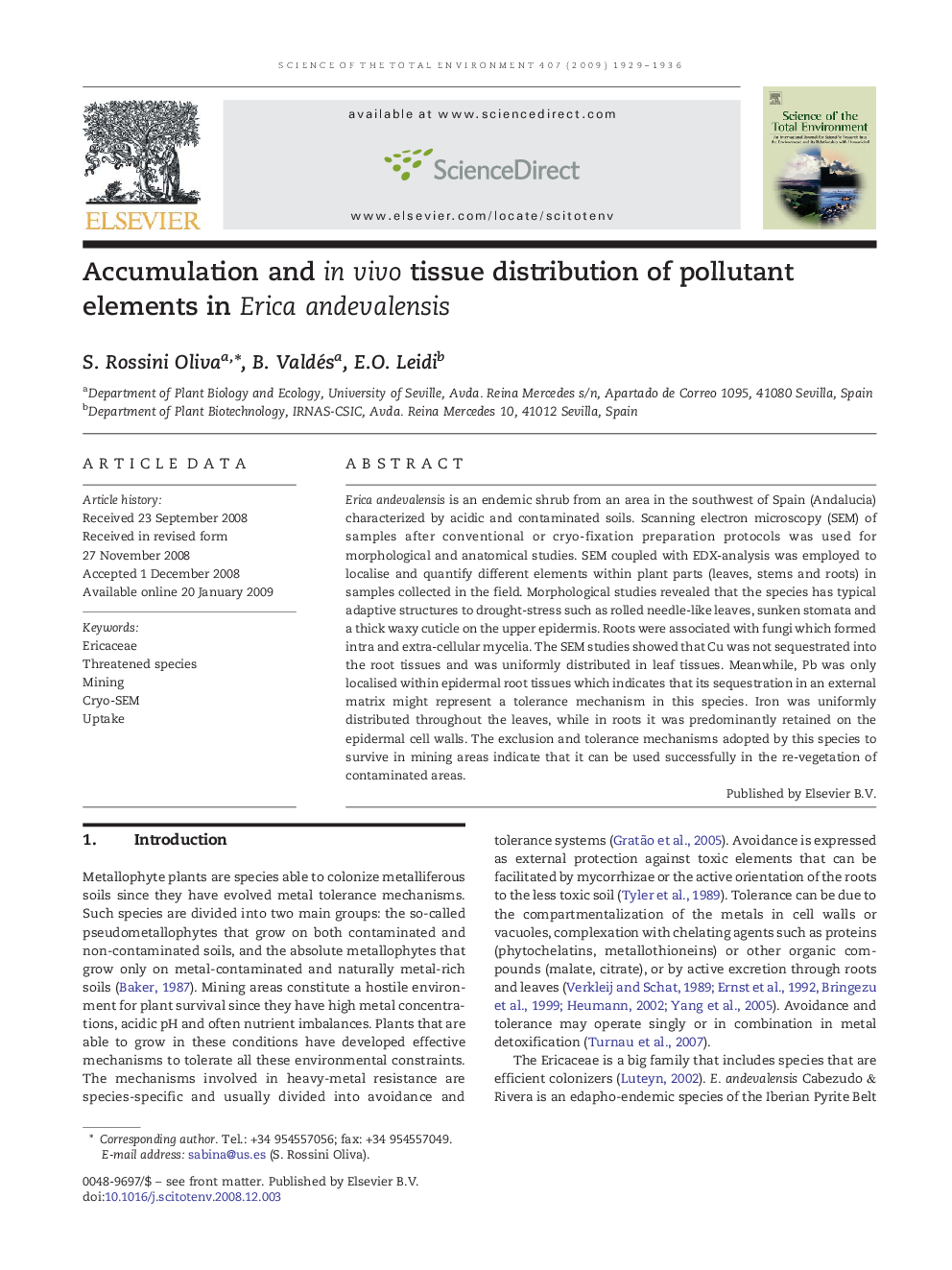| Article ID | Journal | Published Year | Pages | File Type |
|---|---|---|---|---|
| 4432321 | Science of The Total Environment | 2009 | 8 Pages |
Erica andevalensis is an endemic shrub from an area in the southwest of Spain (Andalucia) characterized by acidic and contaminated soils. Scanning electron microscopy (SEM) of samples after conventional or cryo-fixation preparation protocols was used for morphological and anatomical studies. SEM coupled with EDX-analysis was employed to localise and quantify different elements within plant parts (leaves, stems and roots) in samples collected in the field. Morphological studies revealed that the species has typical adaptive structures to drought-stress such as rolled needle-like leaves, sunken stomata and a thick waxy cuticle on the upper epidermis. Roots were associated with fungi which formed intra and extra-cellular mycelia. The SEM studies showed that Cu was not sequestrated into the root tissues and was uniformly distributed in leaf tissues. Meanwhile, Pb was only localised within epidermal root tissues which indicates that its sequestration in an external matrix might represent a tolerance mechanism in this species. Iron was uniformly distributed throughout the leaves, while in roots it was predominantly retained on the epidermal cell walls. The exclusion and tolerance mechanisms adopted by this species to survive in mining areas indicate that it can be used successfully in the re-vegetation of contaminated areas.
